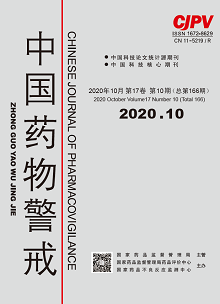|
|
Study on 6-month Repeated Dose Toxicity of Sanqi Yaojiu via Oral Administration in Rats
XIA Lijuan, YIN Xiaohong, ZHANG Chengda, YANG Qian, HUANG Mincong, XIE Fang, CHEN Yunxiang, CHEN Peng, ZHENG Gaoli, ZHANG Lijiang
2020, 17(10):
653-658.
DOI: 10.19803/j.1672-8629.2020.10.02
Objective To observe the repeat-dose toxicity of Sanqi Yaojiu in rats.Methods Totally 200 SD rats (males and females)were randomly divided into 5 groups, namely blank control group (purified water),vehicle control groups (basic liquor 3, 9 mL/kg) and Sanqi Yaojiu group (3, 9 mL/kg), 40 in each group, half male and half female. All rats were administered intragastrically once a day for 6 months with 4-weeks recovery phase. Test indicators included general clinical observation, feeding, weight, ophthalmology and urine examination, hematology, biochemical examination, major organ weighing and organ coefficient, and histopathological examination. Animal necropsy was scheduled at 13 weeks, 26 weeks after administered and the end of the recovery period, respectively. Results After each administration, rats of Sanqi Yaojiu groups showed decreased activity, prone position, weakness (only 9 mL/kg) and salivation (only 9 mL/kg). As the time of administration was prolonged, the period of occurrence and recovery of the above abnormal reactions were gradually shortened, and the above abnormal reactions were recovered after withdrawal. For 9 mL/kg dose of Sanqi Yaojiu or basic liquor, the weight and food intake of male rats were decreased, the neutrophil and monocytes were increased and lymphocyte were decreased in male rats. T.P, ALB, GLO were decreased in male and female rats, and GLU was decreased in female rats. The liver coefficient increased in female rats. Histopathological examination showed that the toxic target organs of rats in the 9 mL/kg dose of Sanqi Yaojiu or basic liquor were liver and stomach, which were basically consistent with the dose of 9 mL/kg of liquor. Rats at 3 mL/kg dose did not show significant toxic target organs. The above abnormal indicators had a certain dose-related and gender differences, and recovered after 4 weeks of withdrawal. Conclusion Intragastric administration of Sanqi Yaojiu for 26 weeks at 9 mL/kg dose can induce reversible damage to liver and stomach in rats. Compared with the same dose of basic liquor, Sanqi Yaojiu did not show new, more serious toxic reactions and toxic target organs.
References |
Related Articles |
Metrics
|
